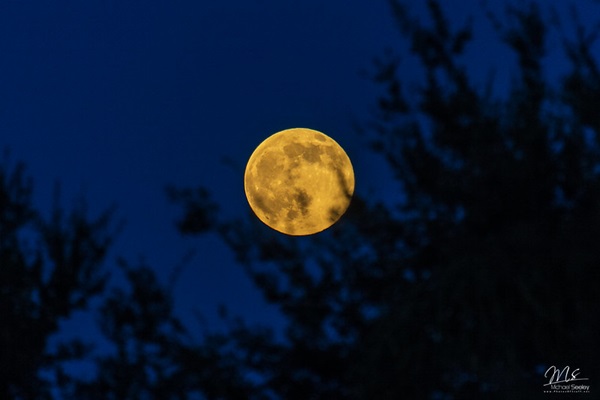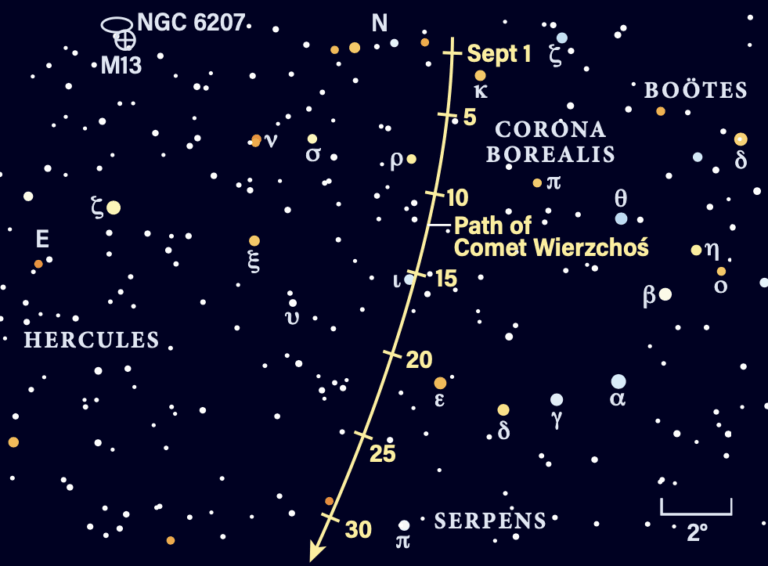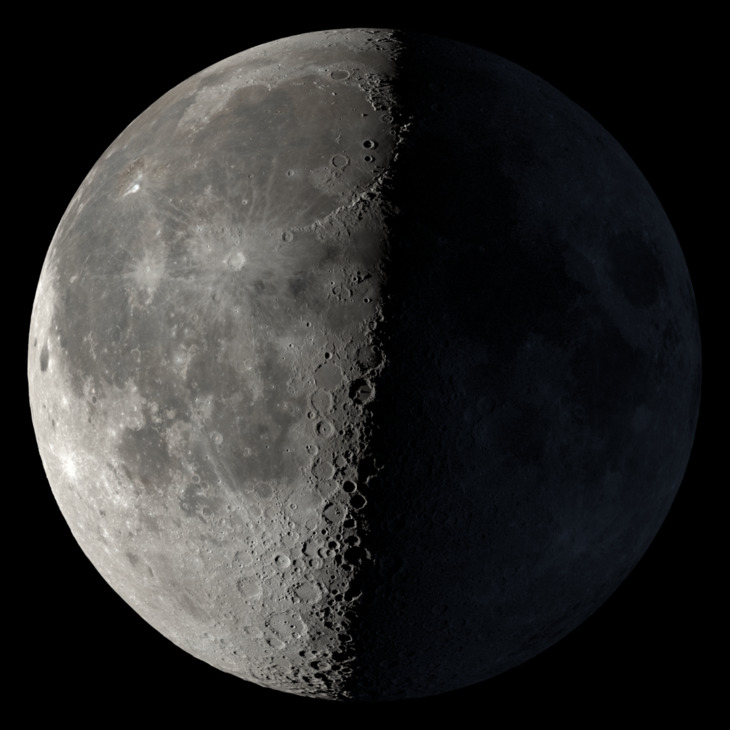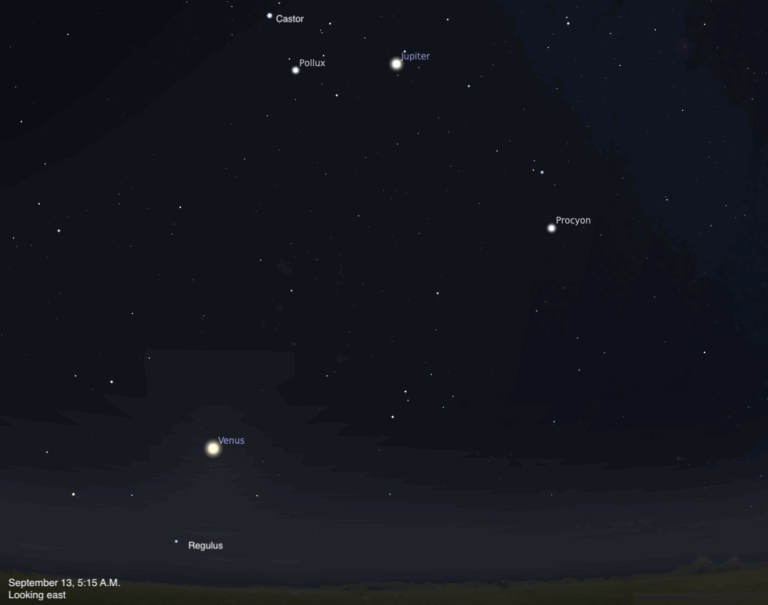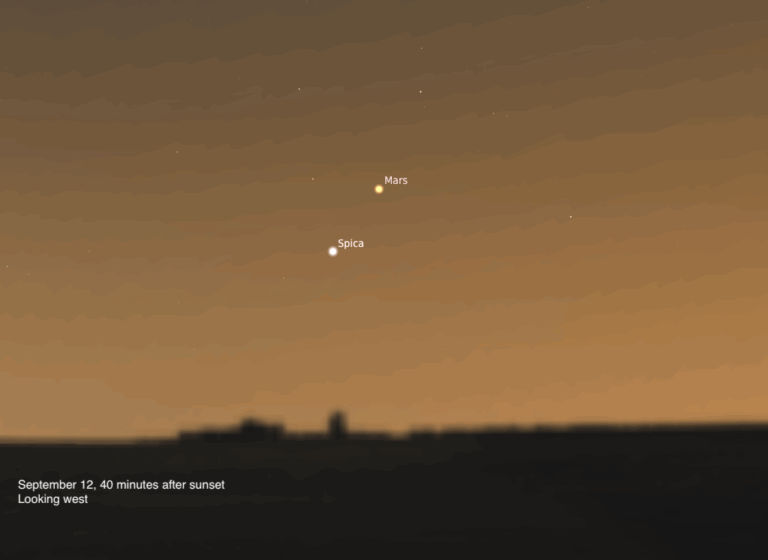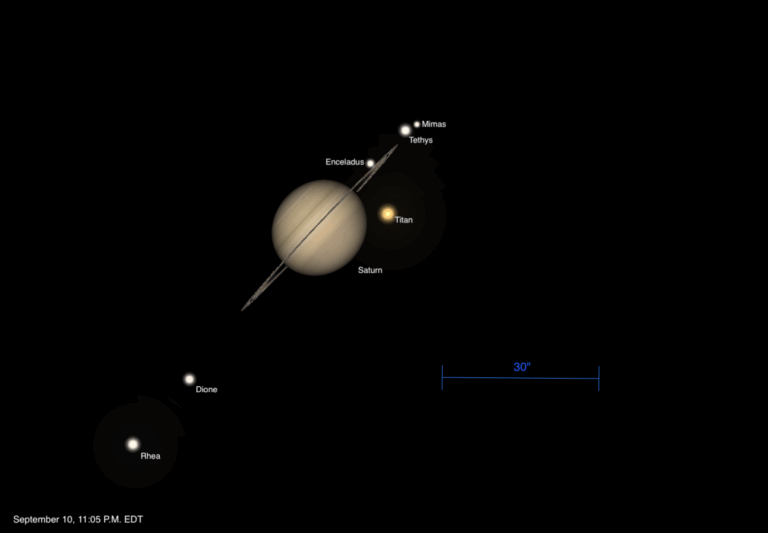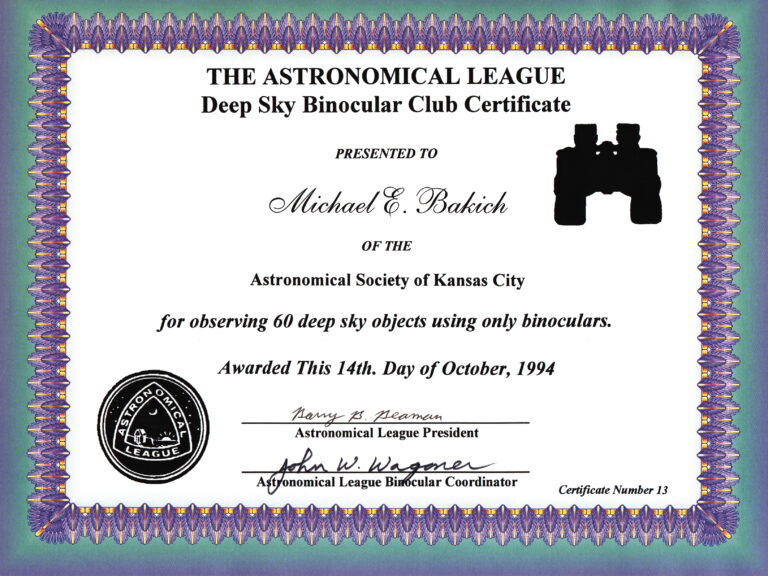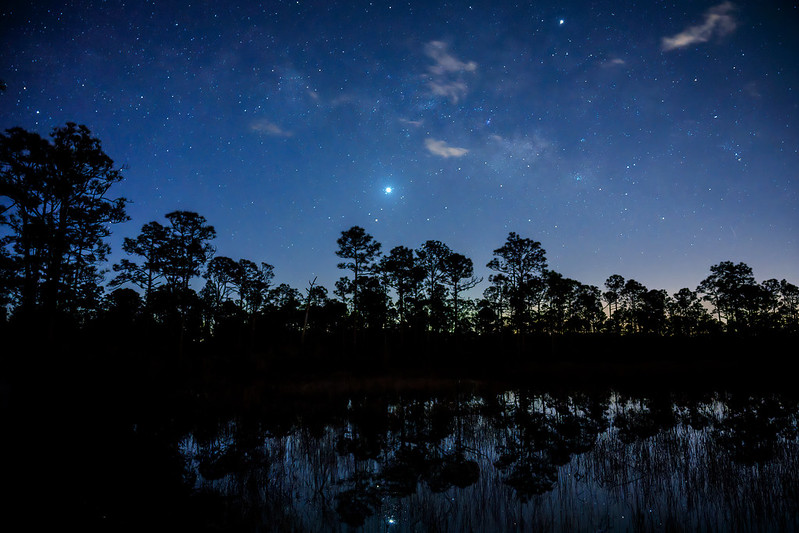
Key Takeaways:

Sky This Week is brought to you in part by Celestron.
Friday, April 25
The Moon passes 1.9° due north of Neptune at 6 A.M. EDT this morning. Early rises will be able to catch the Moon hanging between Venus and Mercury in the predawn sky — check out last week’s column for details.
Later tonight, our satellite then passes 4° north of Mercury at 9 P.M. EDT.
Also tonight, let’s visit a popular pair of galaxies in Ursa Major: M81 and M82. These galaxies lie to the lower left of the Big Dipper’s upside-down bowl, as viewed in the few hours after sunset this evening. Look north to find the Big Dipper and locate the star Dubhe, shining at magnitude 1.8. When the Big Dipper is right-side up, this star is at the upper righthand corner of the bowl.
From Dubhe, move about 10.1° northwest — to the lower left in tonight’s sky. This will land you on M81, also called Bode’s Galaxy, a lovely spiral that glows at magnitude 6.9 and spans some 24′ by 13’. Because it’s so large and so bright, this galaxy is an easy target even for small scopes.
And it’s got a partner nearby: Just 0.6° north of M81 is M82, also called the Cigar Galaxy. This irregular galaxy is oriented more edge-on toward us, making it appear long and thin, like the object for which it is named. It is also undergoing a furious burst of star formation, thanks to its recent (in cosmic terms!) interaction with M81. The Cigar stretches about 12′ by 5.6’ and shines at magnitude 8.4, still making it pretty easy to see in any scope. In fact, wide-field telescopes, binoculars, or even finder scopes will show both galaxies in the same field of view because they lie so close together on the sky.
Sunrise: 6:07 A.M.
Sunset: 7:49 P.M.
Moonrise: 4:47 A.M.
Moonset: 5:32 P.M.
Moon Phase: Waning crescent (7%)
*Times for sunrise, sunset, moonrise, and moonset are given in local time from 40° N 90° W. The Moon’s illumination is given at 12 P.M. local time from the same location.
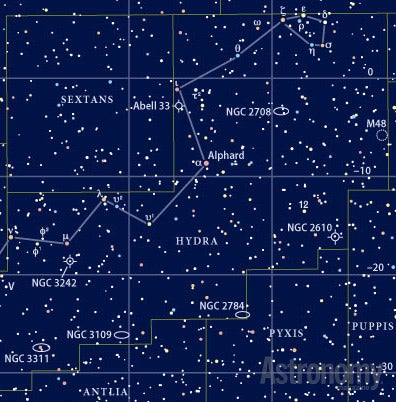
Saturday, April 26
Tonight, let’s turn in the opposite direction to peer deep into the southern sky a few hours after sunset. There, we’ll find an object that is often called spring’s showpiece planetary nebula: NGC 3242 in Hydra.
Also known as the Ghost of Jupiter, this bubble of glowing gas is generated by a dying Sun-like star. It lies 1.8° south of magnitude 3.8 Mu (μ) Hydrae and shines at magnitude 7.8 — pretty bright for a planetary. It gains its common name from the fact that the visible nebula appears roughly the same size as Jupiter through a telescope. The gas generally glows blue or blue-green to most observers’ eyes, making this one of a few vividly colorful cosmic objects you can see without the need for long-exposure photography. Most telescopes will show the Ghost as about 16” across, while larger scopes (11 inches or more) may show the nebula’s fainter outer shell, which stretches some 40” in diameter.
Astronomy Associate Editor Michael Bakich recommends viewing the Ghost of Jupiter with an OIII filter, as much of the nebula’s light comes from excited oxygen.
Sunrise: 6:06 A.M.
Sunset: 7:50 P.M.
Moonrise: 5:15 A.M.
Moonset: 6:50 P.M.
Moon Phase: Waning crescent (2%)
Sunday, April 27
Venus reaches at greatest brilliancy at 6 A.M. EDT, blazing as a magnitude –4.8 morning star before dawn.
An hour before sunrise, Venus is already 7.5° high in the east, hanging just below the Circlet of Pisces. To its lower right is magnitude 1.2 Saturn, readily visible to the naked eye, albeit some 250 times fainter than Venus. Neptune is also nearby — this morning, the ice giant stands 3.5° east-northeast of Saturn, glowing faintly at magnitude 7.8. It is invisible without optical aid, requiring binoculars or a telescope to capture its faint light.
With a telescope, you’ll see that Venus may be bright but it is only showing off a crescent phase some 26 percent lit. Nonetheless, its full disk stretches a hefty 39” — that’s a larger angular size than Jupiter currently, which sports a 34”-wide disk in the evening sky!
Saturn’s disk is 16” across, wreathed in the planet’s lovely rings, which stretch 36” across and are tilted 2° to our line of sight, rendering them quite thin. Neptune’s disk is just 2” wide, appearing as a dim, “flat” blue-gray star against the brightening sky. You’ll need to catch it earlier rather than later, as the oncoming dawn will quickly wash it out.
The Moon reaches perigee early this afternoon at 12:18 P.M. EDT. This is the closest point to Earth in its orbit around our planet, bringing it some 221,903 miles (357,118 kilometers) away.
New Moon occurs about three hours later, at 3:31 P.M. EDT.
Sunrise: 6:05 A.M.
Sunset: 7:51 P.M.
Moonrise: 5:42 A.M.
Moonset: 8:11 P.M.
Moon Phase: New
Monday, April 28
The Moon passes 5° north of Uranus at 10 P.M. EDT. It’s a challenge to spot the barely illuminated Moon in the evening sky, now just 3 percent lit, as it hangs to the lower right of the Pleiades. Git it a try an hour after sunset, as Taurus is getting low in the west but the Pleiades are still some 10° high.
Uranus is visible in binoculars or a telescope, shining at magnitude 5.8. You’ll want to try viewing it as soon as the sky grows dark, as it’s sinking quickly into the turbulent air near the western horizon. From the Pleiades, drop 4.5° south-southwest to 6th-magnitude 13 Tauri, which stands just west of similarly bright 14 Tau. From 13 Tau, Uranus is a shorter 2° jump southwest.
Venus passes 4° north of Saturn at 10 P.M. EDT. The pair is below the horizon at that time, but you can catch them tomorrow morning before dawn — keep reading for more.
Sunrise: 6:03 A.M.
Sunset: 7:52 P.M.
Moonrise: 6:15 A.M.
Moonset: 9:34 P.M.
Moon Phase: Waxing crescent (1%)
Tuesday, April 29
An hour before sunrise, Saturn stands within 4° of Venus in the eastern sky. They’re a lovely naked-eye pair, particularly with Venus still blazing at magnitude –4.8. This is the last morning to catch the inner planet exactly this bright, before it begins slowly fading again. Although the pair of planets is not close enough to view together in a telescope, they should both appear within the field of view of most binoculars. Neptune is also nearby, still roughly 3.5° east-northeast of Saturn, requiring good seeing and optical aid to pick up briefly before the dawn grows too bright.
This evening, the Galilean moons Europa and Ganymede stand 55″ apart, both to the east of Jupiter’s disk. They are visible through any telescope in the few hours after sunset, best observed before Jupiter — the brightest point of light in Taurus, close to the stars that mark the tips of the Bull’s horns — gets too low in the west.
If you’re a regular observer, you may have noticed this pairing has repeated several times over the past few weeks, with increasing distance between the two moons each time. On April 1, there were 10” apart east of Jupiter. On the 8th, they were 18” apart; on the 15th, they were 30” apart; and on the 22nd, they were 40” apart. The similar-but-changing aspect is due to the orientation of their orbits relative to one another, as well as the orbital resonance with which they circle the planet and the orientation of Jupiter with respect to Earth.
Sunrise: 6:02 A.M.
Sunset: 7:53 P.M.
Moonrise: 6:57 A.M.
Moonset: 10:53 P.M.
Moon Phase: Waxing crescent (6%)

Wednesday, April 30
The Moon now passes 5° north of Jupiter at 2 P.M. EDT The pair is visible in the evening sky, lingering for several hours after sunset in the constellation Taurus.
The Moon is now a 15-percent-lit crescent, offering a nice sliver of its eastern limb to view. Look in particular for the dark, round feature of Mare Crisium, the Sea of Crises. The remainder of the lunar face may be lit by earthshine, caused by sunlight bouncing of Earth to illuminate the darkened regions of the Moon.
Hanging below and slightly left of the Moon is bright Jupiter, shining at magnitude –2, the brightest point of light in the Bull. Through a telescope, Jupiter’s four Galilean moons are on display: Europa lies alone west of the planet early in the evening, with Ganymede (closest), Io, and Callisto (farthest) all to the east.
Ganymede is gearing up for a transit that begins at Jupiter’s eastern limb around 10:15 P.M. CDT, as Jupiter is slipping below the horizon on the East Coast. Jupiter sets with Ganymede still crossing the disk in the Central and Mountain time zones — only those on the West Coast will see the end of the transit, just minutes before 11 P.M. PDT. The large moon’s shadow doesn’t begin following it until after the planet has set for the continental U.S.
Sunrise: 6:01 A.M.
Sunset: 7:54 P.M.
Moonrise: 7:49 A.M.
Moonset: —
Moon Phase: Waxing crescent (12%)

Thursday, May 1
With no Moon in the sky at all this morning, turn your gaze to the rising Summer Triangle, which reaches some 45° high in the east by 3 A.M. local daylight time.
This morning we’re focusing on Aquila the Eagle, which holds the point of the Triangle marked by magnitude 0.8 Altair. Center this bright star in binoculars, then slide 2° northwest to magnitude 2.7 Tarazed (Gamma [γ] Aquilae). With this star now centered, glance west-northwest without moving your optics. You should spot a dark splotch in the rough shape of a capital letter E — that’s Barnard’s E, a pair of dark nebulae visible because they blot out the stars behind them. For those observing in telescopes with a smaller field of view, the E lies 1.4° west-northwest of Tarazed.
Barnard’s E comprises Barnard 142 and Barnard 143. The latter is easier to see, forming the northern half of the letter E, while B142 is fainter and lies just to its south. In total, the E covers about 40’ of sky — that’s larger than the Full Moon, so keep in mind that it’s a big object!
Sunrise: 6:00 A.M.
Sunset: 7:55 P.M.
Moonrise: 8:51 A.M.
Moonset: 12:04 A.M.
Moon Phase: Waxing crescent (21%)
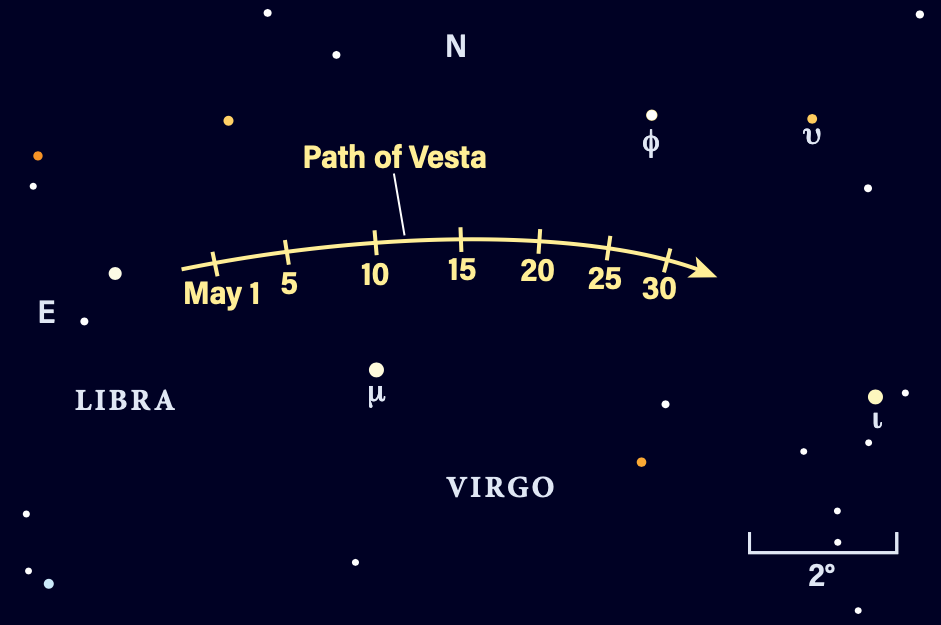
Friday, May 2
Asteroid 4 Vesta reaches opposition at 2 A.M. EDT on the second day of May. Now moving through Libra, Vesta is 45° high in the south around 1 A.M. local daylight time. It remains easily visible for the next several hours, until dawn renders the background sky too bright right as Vesta is sinking into the horizon haze.
To find this main-belt world, first locate Alpha (α) Librae, also called Zubenelgenubi, shining at magnitude 2.8. Zubenelgenubi is actually a wide double star with a fainter, magnitude 5.2 companion 4’ to its northwest. You can easily enjoy this pair in binoculars or a telescope — and many observers can split the stars without any optical aid at all. Give it a try if your sky is dark and steady.
Once you’re done admiring this double, look about 10° to its upper right (north), where you’ll spot a 4th-magnitude sun: This is Mu Virginis. From Mu, it’s now a short 2.5° jump northeast to land on magnitude 5.7 Vesta. It’s the brightest point of light nearby and should be easy to spot, even under relatively light-polluted skies.
Vesta is currently in an ideal location for viewing all month long, even during the Full Moon. It slowly moves from east to west over the course of May, officially passing from Libra into Virgo by the 8th.
Sunrise: 5:58 A.M.
Sunset: 7:56 P.M.
Moonrise: 10:00 A.M.
Moonset: 1:02 A.M.
Moon Phase: Waxing crescent (31%)

